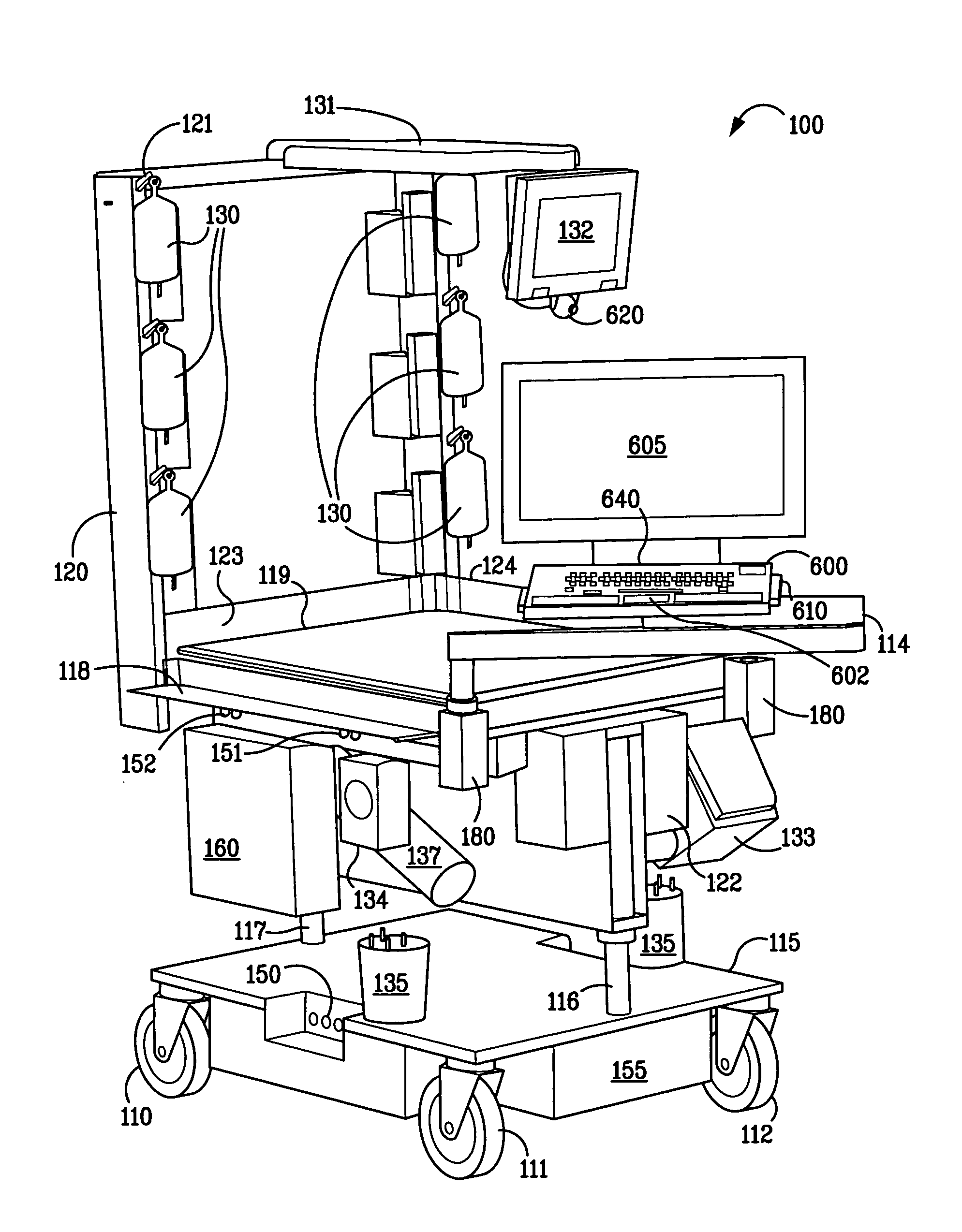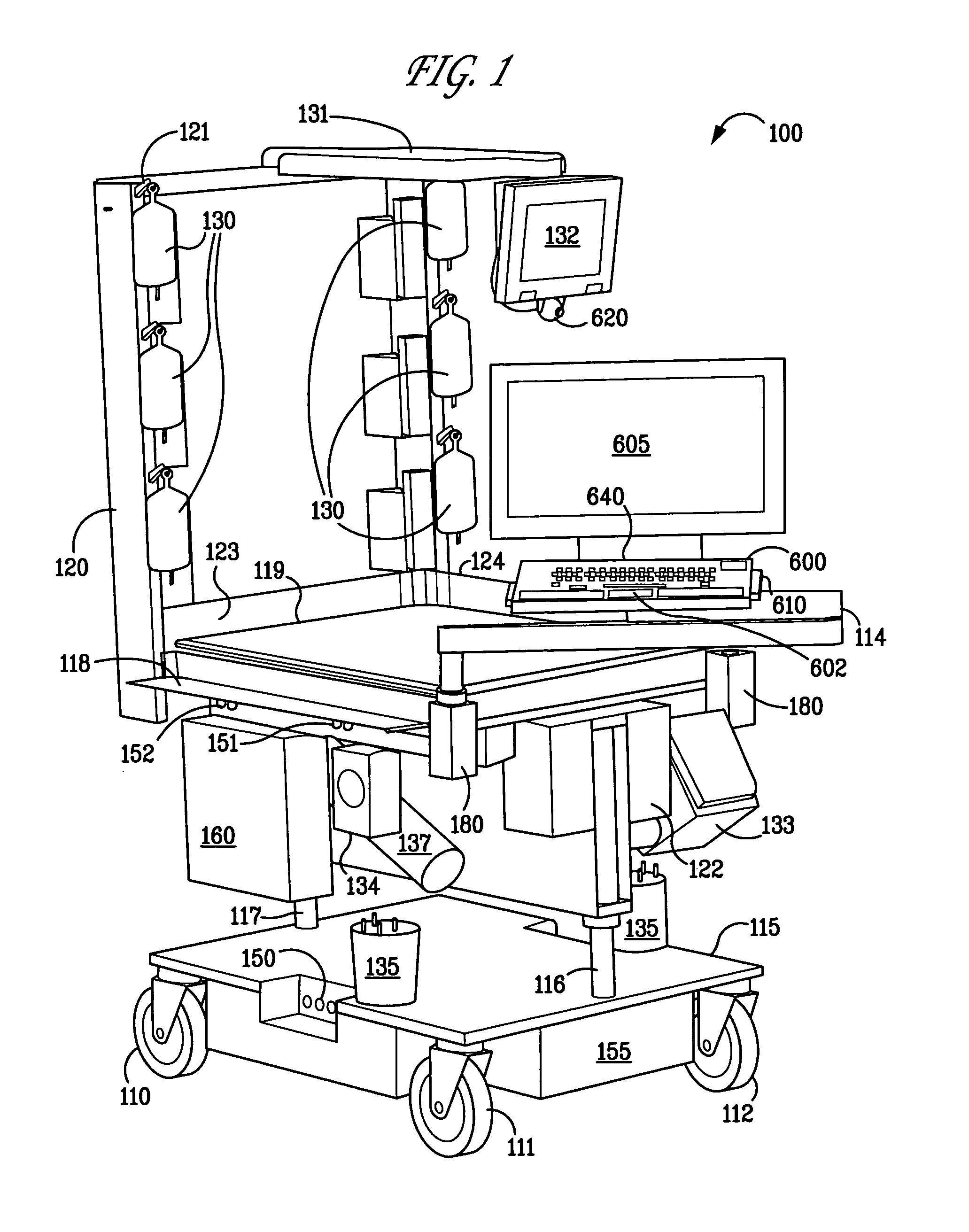Integrated point-of-care systems and methods
a point-of-care system and integrated technology, applied in the field of medical devices and techniques, can solve the problems of serious safety risks to patients, awkward arrangement of medical devices, and risk to health care personnel who attempt to carry or maneuver heavy devices in crowded quarters, so as to facilitate the transport of medical devices, facilitate the decision-making of providers, and prevent errors.
- Summary
- Abstract
- Description
- Claims
- Application Information
AI Technical Summary
Benefits of technology
Problems solved by technology
Method used
Image
Examples
Embodiment Construction
[0035]The present invention provides an integrated point-of-care system and method for integrating point-of-care medical devices and facilitating transport of the medical devices along with the patient.
[0036]An integrated point-of-care system includes a medical monitoring device, a medical care device, a computing system, and a structure. The medical monitoring device monitors patient information for a patient. The medical care device provides medical care to the patient. The computing system receives patient information from the medical monitoring device and transmits control instructions to the medical care device to control the medical care to the patient. The computing system also exchanges data with a central data repository through a communication network. The structure supports the patient, the medical monitoring device, the medical care device, and the computing system. The structure can also transport the patient, the medical monitoring device, the medical care device, and ...
PUM
 Login to View More
Login to View More Abstract
Description
Claims
Application Information
 Login to View More
Login to View More - R&D
- Intellectual Property
- Life Sciences
- Materials
- Tech Scout
- Unparalleled Data Quality
- Higher Quality Content
- 60% Fewer Hallucinations
Browse by: Latest US Patents, China's latest patents, Technical Efficacy Thesaurus, Application Domain, Technology Topic, Popular Technical Reports.
© 2025 PatSnap. All rights reserved.Legal|Privacy policy|Modern Slavery Act Transparency Statement|Sitemap|About US| Contact US: help@patsnap.com



